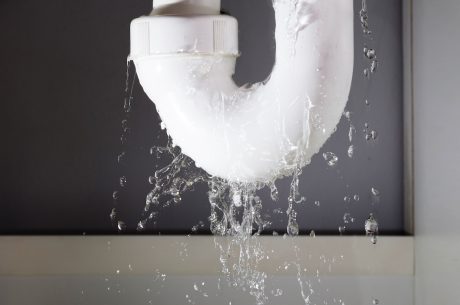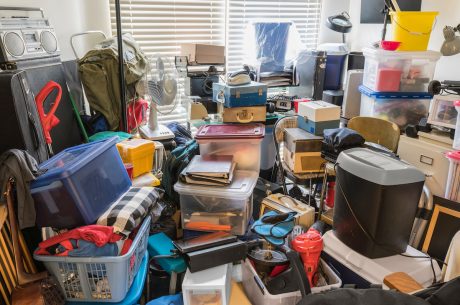Property damage can happen at any time and affects countless homes every year. It happens from a variety of sources, whether it’s a burst pipe, a cooking mishap, or one of Michigan’s notorious storms. Understanding the importance of damage restoration helps get life back to normal more quickly and minimizes stress when the unexpected occurs. Handling damaged property promptly ensures safety and prevents further deterioration.
Property damage comes in many forms. The most common types in Michigan include water, fire, mold, and storm damage. All of these can affect the structural integrity of a building and impact its safety and comfort. Knowing how these damages occur can guide preparation and prevention efforts, helping homeowners ensure the well-being of their residences. The peace of mind that comes from understanding property damage restoration empowers homeowners to tackle these issues with confidence.
Types of Property Damage and Their Causes
Dealing with property damage effectively begins with understanding its main causes. Here’s a rundown of the different types:
1. Water Damage:
– Causes: Leaky pipes, flooding from storms, and faulty appliances.
– Example: During a severe downpour, water might seep through poorly sealed windows or damage roofs, causing water to dribble down walls and settle in basements.
2. Fire Damage:
– Sources: Electrical malfunctions, unattended cooking, and, occasionally, wildfires.
– Everyday examples include grease fires in kitchens or electrical fires sparked by faulty wiring, necessitating specialized cleanup and repair methods.
3. Mold Damage:
– Development: Thrive in damp, humid conditions, often found in basements or poorly ventilated bathrooms.
– Particularly during Michigan’s humid months, mold can form in areas with high moisture, leading to health issues and weakening structural materials.
4. Storm Damage:
– Impact: High winds, hail, and heavy rain can lead to roof and siding damage.
– Violent thunderstorms common in Michigan can easily rip off shingles, tree limbs, and leave behind water-damaged property.
Having a grasp of these main forms of property damage and their causes can empower you to prepare your home and react promptly. Recognizing early signs can prevent these issues from escalating into costly repairs. Understanding what might trigger these damages can also lead to taking preventive steps to protect your home effectively.
Water Damage Restoration Process
Addressing water damage quickly is key to preventing further issues like mold growth. The restoration process begins with a thorough assessment to understand the extent of the damage. This initial step helps in formulating an effective plan to tackle the problem efficiently. Once the extent is known, the focus shifts to water extraction. Using specialized equipment like pumps and vacuums, water is removed from the affected areas until the space is dry.
Following removal, drying and dehumidification are essential to eliminate any remaining moisture. This step stops mold from sprouting and causing future headaches. Industrial-grade dehumidifiers and air movers are employed to dry out the space entirely. Next, cleaning and sanitizing ensure that the environment is safe and healthy. This involves disinfecting surfaces and eliminating any odors left by stagnant water.
Fire Damage Restoration Techniques
Fire damage encompasses more than just charred walls; it includes smoke and water damage from efforts to put out the fire. A comprehensive damage assessment identifies areas affected by fire and smoke to prioritize recovery steps. Structural cleaning comes next, targeting soot and residue. Professionals use special cleaners and techniques to eliminate residues that might corrode or stain surfaces.
Odor removal is crucial, as smoke smells can linger and affect air quality. Techniques like thermal fogging or ozone treatments effectively neutralize these smells, leaving the air fresh and clean. Finally, reconstruction restores the affected areas to their original condition. Rebuilding damaged walls, ceilings, and floors ensures the home regains its structural integrity and comfort.
Mold Remediation Steps
Mold remediation starts with a careful inspection to identify all affected areas. This detailed approach prevents missing hidden mold clusters that could lead to recurring problems. Once identified, the next step is containment. Establishing barriers keeps mold spores from spreading to unaffected areas during removal.
Air filtration plays a vital role in mold remediation. HEPA filters clean the air of spores, ensuring that the environment is safe and breathable. The physical removal of mold colonies follows, involving methods like manual scrubbing or the use of antifungal treatments. The final step is a thorough cleaning and restoration, making sure that the space is mold-free and restored to its original state.
The Importance of Quick and Efficient Restoration
Tackling property damage as soon as it occurs minimizes long-term impacts and costs. Swift action prevents many issues from escalating, saving both time and money in the recovery process. Homeowners should maintain a safe and sound home environment by addressing damage quickly and thoroughly.
Investing in professional services not only solves the problem but also brings peace of mind. Experts ensure that the damage is comprehensively addressed, restoring both the home’s structure and its comfort. With a well-maintained home, you can enjoy a safer, healthier space that withstands Michigan’s challenging weather conditions with ease.
For anyone facing the challenges of structural or aesthetic loss due to various types of damage, it’s reassuring to know there’s expert help available. Discover how professional property damage restoration services can restore your peace of mind and the integrity of your home. Reach out to PuroClean of Howell for expert assistance tailored to your property’s needs.



